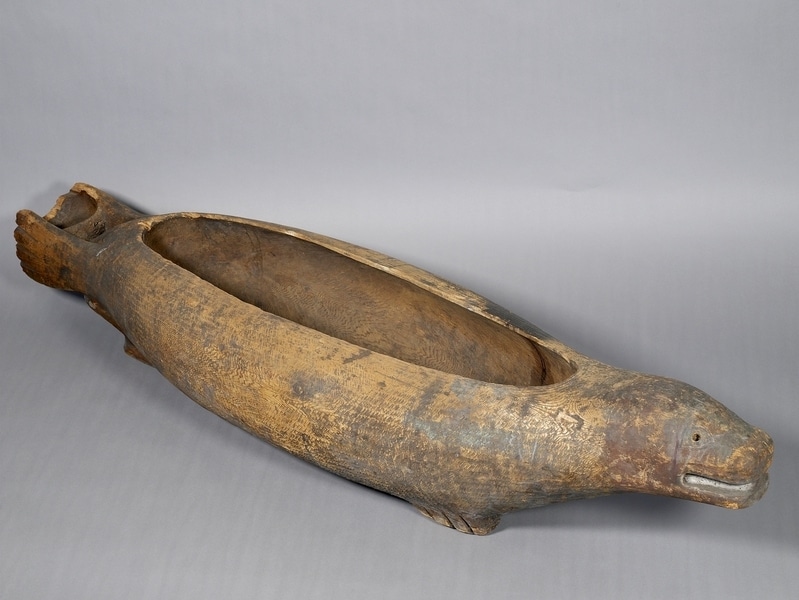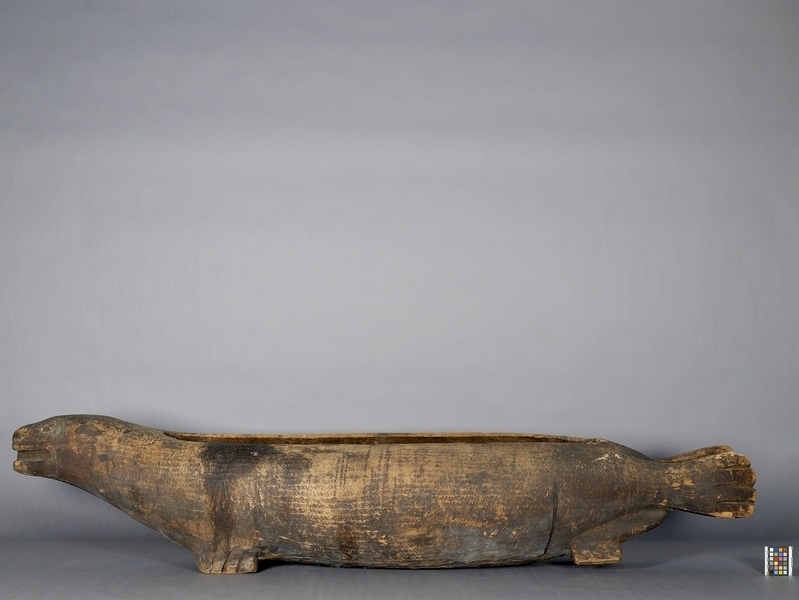Feast Dish Item Number: A7237 from the MOA: University of British Columbia


Description
Feast dish representation of a seal carved from a single log with the body deeply hollowed to form the bowl. The seal's face has carved ovoid eyes and crescent-shaped nostrils. The body is decorated with horizontal adzing except above the forefeet where vertical adzing suggests legs. Adzed fluting surrounds the rim of the bowl. Between the hind feet is a smaller bowl at the end of which is a small carved face. There are supporting legs under the rear of the body. The seal has traces of black, red, white and green paint.
History Of Use
Feast dishes were used primarily to hold food served to guests at important social occasions. Great “house dishes” could hold immense quantities of food. They also held their own names and histories, and were among the most valued privileges passed on through marriage and inheritance.
Cultural Context
ceremonial; potlatch; status
Iconographic Meaning
The seal was an important food resource and may represent wealth and abundance.
Item History
- Made in British Columbia, Canada during 1880
- Collected in Smith Inlet, British Columbia, Canada and Takus, British Columbia, Canada
- Owned by Joe Johnny before April 21, 1953
- Received from Joe Johnny (Seller) and H. R. MacMillan (Funding source) on April 21, 1953
What
- Name
- Feast Dish
- Identification Number
- A7237
- Type of Item
- dish
- Material
- red cedar wood and paint
- Manufacturing Technique
- carved
- Overall
- height 44.7 cm, width 51.7 cm, depth 220.8 cm
Who
- Culture
- Kwakwaka'wakw
- Previous Owner
- Joe Johnny
- Received from
- Joe Johnny (Seller) and H. R. MacMillan (Funding source)
Where
- Holding Institution
- MOA: University of British Columbia
- Made in
- British Columbia, Canada
- Collected in
- Smith Inlet, British Columbia, Canada and Takus, British Columbia, Canada
When
- Creation Date
- during 1880
- Ownership Date
- before April 21, 1953
- Acquisition Date
- on April 21, 1953
Other
- Condition
- fair
- Accession Number
- 1949/0003